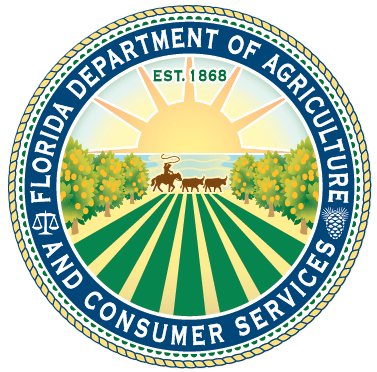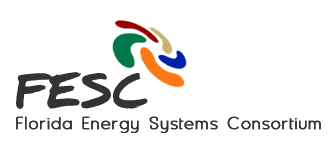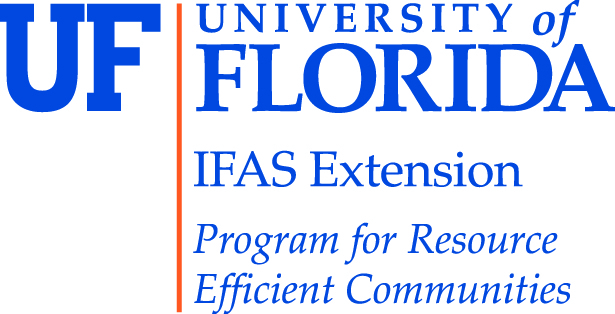Credit: This resource is reproduced in full, with mild formatting and URL hotlink edits, from the fact sheet, UF/IFAS – Energy Efficient Homes: Water Heaters (EDIS-FCS3277) [1], by Wendell A. Porter, Kathleen C. Ruppert, and Randall A. Cantrell [2]
Quick Facts
- Water heating is often the third largest energy expense in your home, after heating and cooling—it can account for 13%–17% of your utility bill.
- The optimum temperature for both energy efficiency and function is 120°F. Higher temperatures increase energy costs and scalding risks. Note: most electric water heaters have two thermostats (one for each heating element), and it is important to make sure they are both at the same setting. For each 10°F reduction in water temperature, you can save 3%–5% in energy costs.
- Install an ENERGY STAR® clothes washer. Most of the energy consumed when washing clothes is used to heat the water.
- Install an ENERGY STAR dishwasher; as with clothes washers, most of the energy consumed by dishwashers is used to heat the water.
- Check with your utility company as it may offer rebates or incentives for certain types of energy-efficient water heaters. Keep in mind that your choice of water heater and its fuel source will depend, in part, on where you live and the space available.
- Install heat traps, one-way valves or loops of pipe, which prevent heated water in a storage tank from mixing with cooled water in pipes. Most new water heater models have factory-installed heat traps. Heat traps can save you $15–$30 per year by preventing convective heat losses through the inlet and outlet pipes.
- If you have a tank-style water heater, drain about a quart of water from the water tank every 3–6 months. This helps to remove sediment that slows down heat transfer and lowers the efficiency of your water heater. Follow the manufacturer’s recommendations for your specific unit.
- If your water heater is more than 10 years old, it is a good idea to start shopping for a new one now. This will give you a chance to do some research and select the type and model that most appropriately meets your needs. Although most water heaters last 10–15 years, it might be economically smarter to replace your water heater early; the lower utility bills could be worth it. Compare costs: purchase price and lifetime maintenance and operation costs.
- For safety concerns as well as energy efficiency reasons, when buying fuel-fired water heaters, look for units with sealed combustion or power venting to avoid back drafting of combustion gases into your home. If fuel-fired water heaters are located in interior spaces, such as interior mechanical rooms connected to conditioned spaces or laundry rooms, they should include provisions for outside combustion air. Also, install a hardwired carbon monoxide alarm (with battery backup) nearby.
Terms to Help You Get Started
Energy Factor (EF)—the ratio of energy received from the water heater to the total amount of energy delivered to the water heater; the higher the better; determined by U.S. Department of Energy test procedures.
ENERGY STAR Qualifying Products—Residential water-heater product classes that are eligible for ENERGY STAR as of April 16, 2015: storage, instantaneous (“tankless”), solar water, and light duty.
First-Hour Rating (FHR)—The amount of hot water in gallons a storage water heater can supply per hour (starting with a full tank of hot water); determined by the manufacturer using U.S. Department of Energy procedures.
Gallons Per Minute (GPM)—The amount of hot water in gallons a tankless water heater can supply per minute during a 77°F temperature increase; determined by the manufacturer using U.S. Department of Energy procedures.
Solar Energy Factor (SEF)—replaces the earlier term “Solar Fraction (SF)”—Both terms mean the same thing. The amount of energy provided by the solar technology divided by the total energy put into the system; used in determining the efficiency of solar water heaters.
What Do You Need to Know?
No matter how you heat water for your home, be certain to take advantage of the savings from these easy conservation measures:
- Install shutoff valves on low-flow showerheads and kitchen faucets. Designed to dribble when closed, the valve controls flow at the push of a button so that water in the pipe stays at the selected temperature while soaping, shaving, or shampooing. These valves are a built-in feature of many low-flow heads.
- Include low-flow aerators or laminar-flow controls on sink and lavatory faucets.
- Install low-flow showerheads with well-designed features that deliver water at about 1.5–2.5 gallons per minute while still providing plenty of force.
- Insulate. Wrap the outside of your water-heater tank with an insulation jacket (sometimes called a water-heater blanket). This is especially useful for older water heaters; new water heaters are often well insulated already. Insulate the first 3 to 4 feet of the cold and hot water pipes connected to the unit. Be sure to follow manufacturer’s directions for installation of any kind of insulation. Caution should be taken if insulating a natural gas or propane fired water heater. The insulating blanket can inadvertently block the air intake causing a health and fire hazard.
- If you have a system with a long distance between the water heater and a major hot water demand area, such as a master bathroom at one end of your house and the water heater at the other end, then you may want to consider a hot water recirculation system. These systems reduce the amount of water that goes down the drain while you wait for the desired temperature.
- Schedule regular maintenance and performance checks. Refer to the manufacturer’s manual for your model before attempting any maintenance procedure.
What Should You Consider When Purchasing a New Water Heater?
You need a water heater capable of providing adequate amounts of hot water during your household’s busiest times of the day. For help in determining your family’s peak-hour demand for hot water, see the Energy Saver website or the publication Energy Saver Guide: Tips on Saving Money and Energy at Home, which can be downloaded as a PDF or a file for use on an Amazon, Apple, Android, or Nook device.
In selecting a tank-style water heater, look for one with a first hour rating (FHR) that matches within 1 to 2 gallons of your peak-hour demand. The FHR is a measure of how much hot water the heater will deliver during a busy hour. Federal law requires this information to be on the unit’s EnergyGuide label.
For new construction, minimize piping runs to hot water requiring areas of the home by design or by centrally locating the water heater. Insulate buried hot-water piping for new construction to minimize heat loss while hot water is flowing through or remaining stagnant in the pipes. Leave the pipe 6 inches below and 6 inches above the slab free of insulation, as having insulation through the slab may increase the potential for insect problems. Insulate all hot water lines in interior walls. Also, insulate all water lines in attic or floor joists.
Choose an ENERGY STAR–labeled water heater. The new criteria went into effect on April 16, 2015. Go to Residential Water Heaters Key Product Criteria to see the new requirements and choose a water heater that meets the ENERGY STAR criteria.
What Are Your Choices for Water Heaters?
One of the first steps in choosing a water heater is to determine the appropriate fuel type. The fuel type or energy source you use not only affects the water heater’s annual operating cost, but also its size and energy efficiency. If considering changing fuel sources, check with your utility company as it may offer rebates or incentives for switching to a gas- or solar-powered water heater. Your choice of water heater and its fuel source will depend, in part, on what area of the state you live in.
Storage water heaters are the most common type. Water is heated in an insulated tank. When the hot-water tap is turned on, hot water flows out of the top of the water heater, and cold water flows into the bottom of the tank to replace the hot water in the top of the tank.
Heat-pump water heaters use electricity for moving heat from one place to another rather than generating heat directly. Refrigerants and compressors transfer heat from the surrounding air into an insulated storage tank.
Demand (tankless or instantaneous) water heaters heat water directly without use of a storage tank. A gas burner or electric element heats water only when there is a demand. Note: There has been some concern expressed about using these units in areas with “hard” water (calcium carbonate rich). Be sure to check with the manufacturer if this is a potential problem.
Tankless-coil water heaters use the home’s main heating system to heat the water. They operate off the house boiler with no separate storage tank.
Indirect water heaters use the home’s heating system as the heat source, but the water from the boiler is circulated through a heat exchanger in a separate, insulated tank. Because hot water is stored in a tank, the boiler does not have to turn on and off as often.
Solar water heaters use the sun’s thermal energy to heat water. These units are usually designed to serve as pre-heaters for conventional storage or tankless water heaters. A solar collector absorbs thermal energy from the sun and transfers this heat to water in a storage tank or water entering a tankless water heater. Note that all solar energy systems manufactured or sold in Florida must meet the standards established by the Florida Solar Energy Center and display accepted results of approval performance tests. See Florida law (section 377.705, Florida Statutes) and the Florida Solar Energy Center for more information. Also, see the Solar Rating and Certification Corporation (SRCC) website. SRCC is a non-profit organization whose primary purpose is the development and implementation of certification programs and national rating standards for solar energy equipment.
Drain-Water Heat Recovery—sometimes referred to as heat recovery units (HRU) or grey water recovery units—systems operate with all types of water heaters, especially demand and solar types. In essence, the system “captures” some of the heat from hot water traveling through the pipe as it goes down the drain. The system then uses this heat to pre-heat the incoming cold water that goes to the water heater or a fixture, such as a shower.
Gas-condensing water heaters are similar to conventional gas storage water heaters with a few exceptions. The major enhancement these units have over the conventional units is the ability to capture the heat of condensation of the combustion gases. The burner heats the water like typical gas storage models, but the combustion gases are vented through coils that provide additional heat to the water. Residential gas-condensing water heaters are popular in Europe, but they are mostly found in commercial applications in North America. However, manufacturers are considering developing this product line if a market is available.
In addition to considering the water heater types available to you and determining the size system you will need, you will also want it to perform efficiently. Luckily, there are indicators that will help you do just that.
Energy Factor
The best indicator of a heater’s efficiency is its Energy Factor (EF). EF is based on recovery efficiency (i.e., how efficiently the heat from the energy source is transferred to the water); standby losses (i.e., the percentage of heat lost per hour from the stored water compared to the heat content of the water); and cycling losses, based on an average household use of 64 gallons of hot water per day. The higher the EF, the more efficient the water heater.
EnergyGuide Label
Look at the bright yellow and black EnergyGuide label to indicate the estimated annual energy consumption and operating cost of the water heater (given at a certain rate). The EnergyGuide label is found on certain types of storage, instantaneous, and heat-pump type water heaters. The label provides estimated annual energy consumption of a particular model on a scale showing its performance compared to a range of similar models. By comparing a model’s annual operating cost with the operating cost of the most efficient model, you can compare efficiencies.
If considering electric or gas-storage water heaters, use the U.S. Department of Energy’s interactive Energy Cost Calculator for Electric and Gas Water Heaters to help you make your decision.
No matter what type of water heater you look at, be sure to compare warranties—including those portions applicable to labor and parts—along with the maintenance requirements of the unit.
ENERGY STAR® Product Finder
The table(s) below offer a real-time list of ENERGY STAR® Certified products related to this fact sheet. Using the vertical and horizontal scroll bars, you can look for specific manufacturer brand names, model numbers, and compare a variety of product specifications and energy performance metrics. Individual columns can be filtered using the column specific “Menu” icons adjacent to their “Information” icons. The entire dataset can be searched using the “Magnifying Glass” icon in the dark grey bar at the top of the table.
Certified Water Heaters
References and Resources
Air Conditioning, Heating, and Refrigeration Institute (AHRI). Directory of Certified Product Performance. Accessed January 12, 2015. *Search this database—under the Residential list, click on Water Heaters–to find available products by energy factor and tank size. Make sure you specify your energy source, gas type, and heater type before conducting the search.
American Council for an Energy-Efficient Economy (ACEEE) Smarter House. Water Heating. Accessed January 12, 2015.
California Urban Water Conservation Council. H2Ouse Water Saver Home. Accessed September 23, 2014.
Coalition for ENERGY STAR Water Heaters. Accessed January 12, 2015.
Florida Building Code, 5th Edition (2014). Especially requirements for fuel-fired appliances, such as water heaters and furnaces. In particular, “Chapter 7: Combustion Air” of Florida Building Code, 5th Edition, Mechanical. Accessed September 23, 2014.
Florida Solar Energy Center. Accessed September 23, 2014.
Home Innovation Research Labs. Heat Pump Water Heaters. Accessed September 23, 2014.
Home Innovation Research Labs. Hot Water Recirculation Systems. Accessed September 23, 2014.
Home Innovation Research Labs. Solar Water Heaters. Accessed September 23, 2014.
Home Innovation Research Labs. Tankless Water Heaters. Accessed September 23, 2014.
Hot Water Heaters Reviews. Accessed September 23, 2014.
Solar Rating & Certification Corporation. Accessed September 23, 2014.
Southface Energy Institute. Accessed September 23, 2014.
U.S. Department of Energy (Energy.gov). Energy Saver Guide: Tips on Saving Money and Energy at Home. Accessed September 23, 2014.
U.S. Department of Energy (Energy.gov). Energy Saver: Water Heating. Accessed September 23, 2014.
U.S. Environmental Protection Agency. WaterSense. Accessed September 23, 2014.
U.S. Environmental Protection Agency. ENERGY STAR Product Specification for Residential Water Heaters. Accessed January 12, 2015.
U.S. Environmnetal Protection Agency. Residential Water Heaters Key Product Criteria. Accessed January 12, 2015.
U.S. Government. Electronic Code of Federal Regulations. Accessed January 12, 2015.
Footnotes
[1] This document is FCS3277, one of an Energy Efficient Homes series of the Family, Youth and Community Sciences Department, UF/IFAS Extension. This material was prepared with the support of the Department of Environmental Protection, Florida Energy Office, which is now the Florida Department of Agriculture and Consumer Services (FDACS), Office of Energy. However, any opinions, findings, conclusions, or recommendations expressed herein are those of the author(s) and do not necessarily reflect the views of FDACS. Original publication date June 2008. Revised February 2015. Please visit the EDIS website.
[2] Wendell A. Porter, PhD, PE and lecturer, Department of Agricultural and Biological Engineering; Kathleen C. Ruppert, EdD, UF/IFAS Extension scientist, Program for Resource Efficient Communities; and Randall A. Cantrell, PhD, assistant professor, Department of Family, Youth, and Community Sciences; UF/IFAS Extension, Gainesville, FL 32611.




